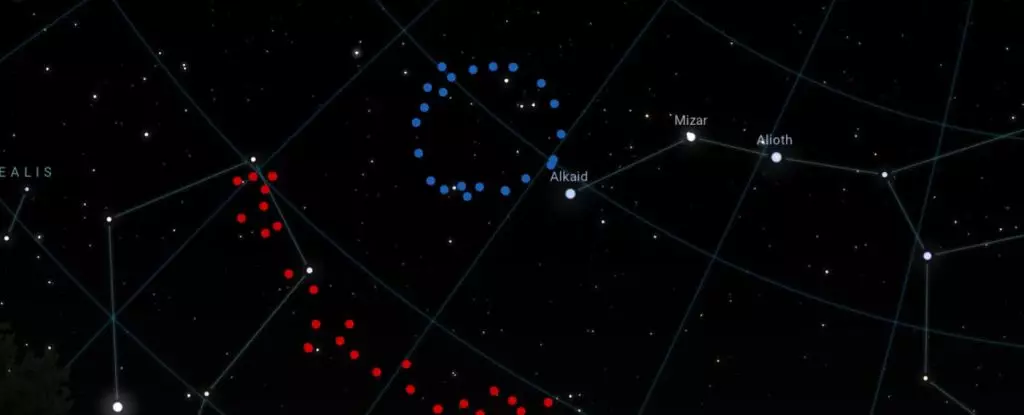The cosmos has always been a subject of deep fascination for humanity. However, a recent revelation by astronomers is drastically reshaping our comprehension of the universe’s structure and evolution. A celestial formation, dubbed the “Big Ring,” has emerged from the depths of space, challenging established cosmological theories and beckoning scientists to revisit the foundations of their discipline.
In the expansive reach of the universe, a remarkable discovery has taken shape, presenting a nearly perfect ring of galaxies spanning an astonishing 1.3 billion light-years in diameter. Astronomers, led by Alexia Lopez from the University of Central Lancashire, revealed this colossal structure during the 243rd meeting of the American Astronomical Society. Notably, the light from this colossal formation has traversed a staggering 6.9 billion years to reach Earth, providing a glimpse into a cosmic reality that predates our own existence.
The Big Ring aligns itself alongside another considerable structure known as the Giant Arc, which was discovered a mere two years prior. Positioned in the same sector of the sky and at an equivalent distance, these two formations present astronomers with an intriguing pair of cosmic anomalies that defy the conventional understanding of large-scale structures in the universe.
The implications of these discoveries are as perplexing as they are profound. Traditionally, cosmology has operated under the presumption that structures within the universe should be uniformly distributed, particularly beyond a defined size limit of approximately 1.2 billion light-years. The presence of both the Giant Arc — nearly three times larger than this threshold — and the newly discovered Big Ring introduces a significant anomaly that demands thorough investigation. According to Lopez, the unexpected emergence of these colossal structures challenges our prior understanding of the cosmos.
“Ironically, both formations being relatively close in cosmological terms intensifies the enigma,” Lopez noted during her presentation. The shapes, dimensions, and proximity of these structures beg the question: What are they revealing about the universe’s fundamental nature and the laws that govern it?
Researchers have speculated about various potential explanations for these colossal formations. One theory revolves around Baryon Acoustic Oscillations (BAO), which represent spherical arrangements of galaxies originating from sound waves in the early universe. While BAOs have a consistent size of around 1 billion light-years, the Big Ring eschews this categorization, taking on a distinctive corkscrew shape that resembles a ring yet does not conform to the established parameters of BAO.
Investigation into what might underlie these structures has also led to considerations of alternative cosmological models. Among these is Roger Penrose’s controversial theory of conformal cyclic cosmology, which posits that the universe undergoes repetitive cycles of expansion and contraction, suggesting that ring-like structures may be a natural consequence of this oscillatory behavior. However, this model is not without its complications and accepts limitations in explaining the full nature of the cosmos.
Another tantalizing hypothesis involves cosmic strings, theoretical defects in the fabric of space-time thought to have originated during the universe’s formative years. Though direct evidence supporting cosmic strings remains elusive, their existence offers a fascinating lens through which to examine cosmic anomalies like the Big Ring and Giant Arc. These cosmic strings might serve as the “wrinkles” in space-time, potentially accounting for the unique configurations observed in these massive cosmic structures.
As we delve deeper into the cosmos, the discovery of the Big Ring presents both an extraordinary challenge and an opportunity for growth within the field of cosmology. With this revelation, scientists are now beckoned to explore novel theories while re-evaluating existing paradigms. While the structures might merely represent a coincidental arrangement of galaxies, the likelihood of them being mere chance seems exceedingly small. As astronomers continue their investigations, perhaps more discoveries of similar magnitude will arise, offering insights that illuminate the hidden aspects of the universe.
“The findings compel us to revisit our understanding of cosmic architecture,” Lopez stated, highlighting the ongoing quest for knowledge in the vast, enigmatic cosmos. The universe remains an uncharted territory that holds untold secrets, and as we strive to understand it, we may unearth revelations that will reshape our perspective on every cosmic law we once took for granted.


Leave a Reply